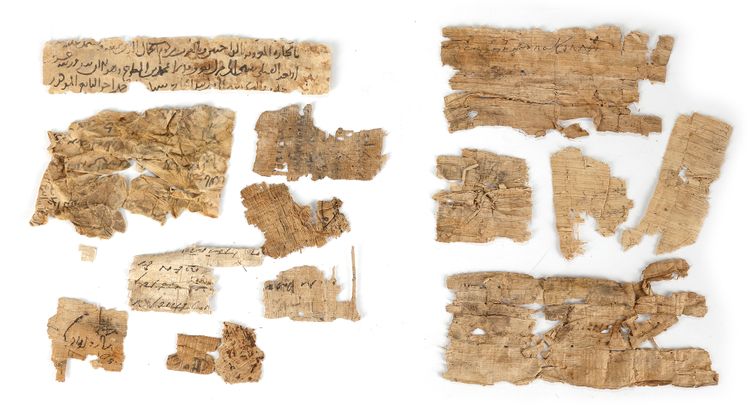A COLLECTION OF PAPYRUS AND PAPER FRAGMENTS, EGYPT-FUSTAT, 7TH-10TH CENTURY
A collection of 15 papyrus and paper fragments, in Arabic and Greek including letters about trade and business. Six fragments with a clear Arabic manuscript on paper and papyrus in a variety of angular and cursive scripts. Five fragments in a Greek uncial hand, with some early scribble peculiarities: the hairline of central omega leaning left, the mu wide with straight lines.
CATALOGUE NOTE The papyrus documents are in this lot most likely to have originated from Fustat (old Cairo), they date from the 7th-10th century. Although paper-making know-how was introduced into the eastern Islamic world as early as 746 AD (at a battle near Samarkand in 751 AD the Arabs captured several Chinese prisoners who knew how to make paper) its use spread westwards across the Islamic empire relatively slowly. At the same time vellum (parchment), made from the dried and cured hides of domestic animals, was extremely expensive to produce and was reserved primarily for the writing of Qurans and occasionally other religious text.


